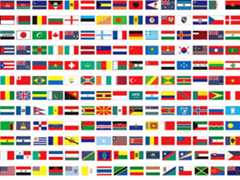Our editors will review what you’ve submitted and determine whether to revise the article.
Mozambique
- Where is Mozambique located?
- What is the capital city of Mozambique?
- What are the major geographical features of Mozambique?
- What languages are commonly spoken in Mozambique?
- What are some traditional foods or dishes in Mozambique?
- How did Mozambique gain its independence?
- What are the main economic activities in Mozambique?
- What kinds of wildlife and protected areas can be found in Mozambique?
News•
Mozambique, sceniccountry in southeasternAfrica. Mozambique is rich in natural resources, is biologically and culturallydiverse, and has a tropical climate. Its extensive coastline, fronting theMozambique Channel, which separates mainland Africa from the island ofMadagascar, offers some of Africa’s best natural harbors. These have allowed Mozambique an important role in the maritime economy of theIndian Ocean, while the country’s white sand beaches are an important attraction for the growing tourism industry. Fertile soils in the northern and central areas of Mozambique have yielded a varied and abundant agriculture, and the greatZambezi River has provided ample water for irrigation and the basis for a regionally importanthydroelectric power industry.
Yet Mozambique’s turbulent recent history has kept its people from fully enjoying these natural advantages and from developing a stable, diversified economy. A former colony ofPortugal, Mozambique provided mineral and agricultural products to its distant ruler while receiving few services in return. Following independence in 1975, Mozambique was torn by internal conflict as theMarxist government, supported in part by theSoviet Union andCuba, battled anticommunist forces funded bySouth Africa and the former Rhodesia (nowZimbabwe) for control of the country. Marked by countless acts of terror, the ensuing warfare displaced at least four million people and resulted in the death of perhaps a million more as a result of the violence, famine, and disease it engendered. Violence and disunityhindered economic development, especially the broadening of tourism, and discouraged foreign investment. The conflict formally ended in 1992, but its lingering effects are many: in the early 21st century, as many as one million unexploded land mines still remained along the country’s trails and roads, and much political strife continued between the major opposition forces and the central government.

- Head Of State And Government:
- President: Daniel Chapo
- Capital:
- Maputo
- Population:
- (2025 est.) 34,091,000
- Form Of Government:
- multiparty republic with a single legislative house (Assembly of the Republic [250])
- Official Language:
- Portuguese
- Official Religion:
- none
- Official Name:
- República de Moçambique (Republic of Mozambique)
- Total Area (Sq Km):
- 799,380
- Total Area (Sq Mi):
- 308,641
- Monetary Unit:
- (new) metical (MTn; plural meticais)1
- Population Rank:
- (2025) 46
- Population Projection 2030:
- 38,381,000
- Density: Persons Per Sq Mi:
- (2025) 110.5
- Density: Persons Per Sq Km:
- (2025) 42.6
- Urban-Rural Population:
- Urban: (2023) 34.7%
- Rural: (2023) 65.3%
- Life Expectancy At Birth:
- Male: (2022) 52.9 years
- Female: (2022) 58.7 years
- Literacy: Percentage Of Population Age 15 And Over Literate:
- Male: (2020) 72%
- Female: (2020) 49%
- Gni (U.S.$ ’000,000):
- (2023) 18,203
- Gni Per Capita (U.S.$):
- (2023) 540
- The (new) metical (MTn) replaced the (old) metical (MT) on July 1, 2006, at a rate 1 MTn = MT 1,000.
In 2005, as part of a torch relay program to mark 30 years of independence, PresidentArmando Guebuza noted that the torch’s flame was a symbol of Mozambique’s history and would light the people’s path “to the consolidation of independence and construction of their well-being.” As the torch was passed to a Mozambican born in the year that the country gained its independence, Guebuza remarked
Handing this torch over to ayouth symbolizes our certainty that the combat we wage against poverty will be continued by our young people, guardians of our glorious political, historical and cultural heritage.
The capital isMaputo. Known until independence as Lourenço Marques, the city boasts fine colonial-era architecture and an attractive natural setting alongside the deepwater harbor ofMaputo Bay. Maputo is the commercial and cultural center of the country, and its sidewalk cafés, bars, and discotheques offer some of the liveliest nightlife in southern Africa. Other major cities and towns, most of which lie on or near the Indian Ocean coast, includeBeira,Quelimane,Chimoio,Tete, Nampula, andNacala.

Land
Mozambique is about the size of the combined areas of the U.S. states of Colorado,New Mexico, and Utah; most of its territory stretches along the Indian Ocean coast from Cape (Cabo) Delgado in the north past the capital city ofMaputo in the south. It is bordered to the north byTanzania, to the east by the Mozambique Channel, which separates it from the island ofMadagascar, to the south and southwest bySouth Africa andSwaziland, to the west byZimbabwe, and to the northwest by Zambia,Malawi, andLake Nyasa.
Relief
Lowlands dominate the southern provinces, narrowing to a mere coastal plain north of thecleft where theZambezi River cuts through the country’s midsection. The Zambezi valley, the lower section of which is a part of the Eastern (Great)Rift Valley, is Mozambique’s most dramatic geographic feature. Throughout the country the land rises gently from east to west. In the center and north it slopes steadily into the high plains and ultimately to the mountainous regions on the northwest border with Malawi and Zambia. Four of Mozambique’s five highland regions straddle the west and northwest border areas: theChimoio Plateau on the border with Zimbabwe, theMarávia highlands bordering Zambia, and theAngónia highlands andLichinga Plateau, which lie, respectively, west and east of Malawi’s protrusion into Mozambique.Mount Binga, the country’s highest elevation at 7,992 feet (2,436 meters), is part of the Chimoio highlands. The 7,936-foot (2,419-meter) peak atMount Namúli dominates the Mozambican highland, whichconstitutes much of the northern interior.




















